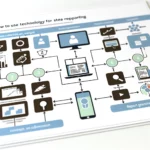In the evolving landscape of business operations, where transparency and equality are increasingly becoming cornerstones, the Workplace Gender Equality Agency (WGEA) reporting stands as a critical benchmark in Australia. This annual reporting requirement, aimed at promoting gender equality in the workplace, necessitates a detailed and accurate representation of a company’s employment data, policies, and practices regarding gender equality. Given the complexity and depth of data required, leveraging technology for efficient WGEA reporting is not just beneficial; it’s essential. This post delves into how technology can streamline the WGEA reporting process, ensuring compliance, and fostering a culture of equality and diversity within the workplace.
Understanding WGEA Reporting
The WGEA reporting framework is designed to encourage Australian employers to take proactive steps towards achieving gender equality in their organisations. It requires non-public sector employers with 100 or more employees to submit a report annually on various indicators, including gender composition of the workforce, gender pay gaps, and conditions of employment. The aim is to provide a clear picture of the progress towards gender equality across different industries and to help organisations identify areas for improvement.
The Role of Technology in Streamlining WGEA Reporting
- Automated Data Collection and Analysis

Manual data collection and analysis can be time-consuming and prone to errors. Advanced software solutions, however, can automate these processes, significantly reducing the time and effort required. These tools can gather data from various sources within an organisation, such as HR systems, payroll, and performance management platforms, ensuring a comprehensive and accurate dataset. Furthermore, they can automatically analyse this data to highlight trends, disparities, and areas needing attention, which are critical components of the WGEA report.
- Enhanced Accuracy and Compliance
Accuracy in WGEA reporting is paramount, as inaccuracies can lead to compliance issues and potentially harm an organisation’s reputation. Technology plays a crucial role here by providing sophisticated algorithms that ensure data integrity and consistency. Additionally, many software solutions are designed to align with the specific requirements of WGEA reporting, thereby minimising the risk of non-compliance.
- Streamlined Reporting Process

Compiling and submitting the WGEA report can be a daunting task due to the detailed information required. However, with the right technology, organisations can streamline this process. Reporting tools often come with pre-built templates and guided workflows tailored to WGEA reporting standards, making it easier for organisations to compile their reports. These tools can also generate reports automatically, ready for submission, saving valuable time and resources.
- Real-Time Insights and Decision Making
One of the significant advantages of using technology for WGEA reporting is the ability to access real-time insights. This enables organisations to monitor their performance against gender equality objectives continuously and make informed decisions to address any issues promptly. It fosters a culture of continuous improvement and helps organisations stay ahead in their gender equality journey.
- Facilitating Transparency and Engagement

Technology not only aids in the reporting process but also in enhancing transparency and engagement around gender equality initiatives. By utilising online platforms and dashboards, organisations can share their progress with employees, stakeholders, and the public in a clear and engaging manner. This openness can boost employee morale, attract talent, and improve public perception.
In conclusion, leveraging technology for efficient WGEA reporting is indispensable in today’s digital age. It not only simplifies the reporting process but also plays a vital role in advancing gender equality within the workplace. By embracing the right technological tools and solutions, organisations can ensure compliance, enhance transparency, and foster an inclusive and equitable work environment.
Key Takeaways
- Automation is Key: Leveraging automated tools for data collection and analysis can significantly enhance the efficiency and accuracy of WGEA reporting.
- Ensure Compliance and Accuracy: Utilising technology designed for WGEA reporting can help ensure compliance with reporting requirements and improve data accuracy.
- Streamline the Reporting Process: Technology can simplify the reporting process, making it less daunting and more efficient.
- Embrace Real-Time Insights: Access to real-time insights allows organisations to make timely decisions and foster continuous improvement in gender equality.
- Promote Transparency and Engagement: Technology facilitates greater transparency and engagement with employees and the wider community, promoting a positive culture around gender equality.





